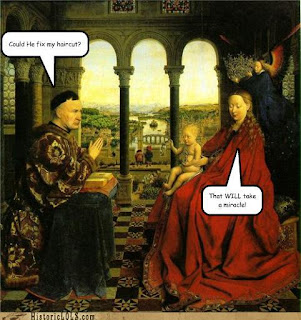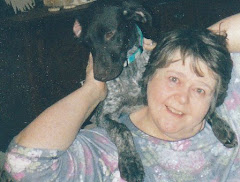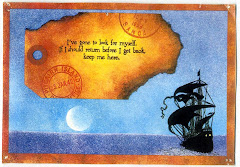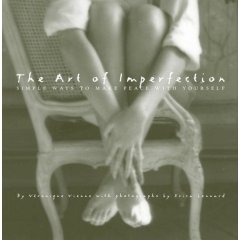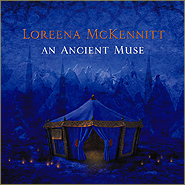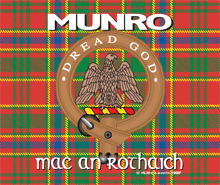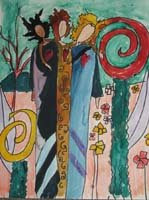The older I get, the more dissatisfied I have become with modern-day Halloween. After my daughter grew up and left home, I no longer decorated my house and yard to the hilt with Halloween decorations. I was forced to sell most of my vintage Halloween postcards and other collectibles.
Hardly any trick or treaters ever come to our house. I'm too old to go bar hopping and see drunks in bizarre costumes. I have never, ever liked images of skeletons, ghouls, zombies, werewolves, mummies, Dracula, Frankenstein and the like. I would never, ever go to a slasher flick on Halloween or any time.
However, the more I studied my Celtic origins, the more I learned about Celtic Halloween, or Samhain. (And learned that modern Halloween borrows a great deal from the Celts.) Through my studies, I discovered new ways to celebrate this hallowed eve. As I wrote in my previous post, Halloween is a good time to honor The Crone. It is also a perfect time to honor our ancestors. In fact, sometimes this biggest and most important holiday of the Celtic Year is also called Ancestor Night.
Not everybody joining in the Celtic Samhain celebrations was necessarily human . . . or of our world. The supernatural was an ever-present force in the lives of the Celts. They made little distinction between the living and the dead. And they believed that at Samhain, their New Year's Eve, the veil between these two worlds became the thinnest, the border flexible and open.
During this interval the normal order of the universe is suspended, the barriers between the natural and the supernatural are temporarily removed, the sidhe (fairy hills) lie open and all divine beings and the spirits of the dead move freely among men and interfere, sometimes violently, in their affairs.
Yes, not all spirits were benign. Even a departed human might come after you to discharge a debt. In addition to the mortal dead, there were the immortal fairies, who were mischievous and could spirit you away. The pooka was also said to roam free at Samhain. The pooka was a black, ugly horse with red eyes and the ability to talk. He had a penchant for kidnappings and copiously urinating on berries. (On the other hand a respectful contact with the pooka could show you the future.)
Not only was the pooka out and about, so was the horrid, screeching bean sidhe (banshee), harbinger of death. It was said that the banshee could be killed by humans on this night. Also, on Samhain, it was said that humans could drink with mighty heroes and bed their beautiful female companions . . . as long as they didn't make any mistakes, break any rules or violate any taboo. The problem was that the chances to foul up far outweighed the chances of a good night out.
From the fear of dangerous, unfriendly spirits came our modern Jack O'Lanterns, Halloween costumes and trick or treating. Samhnag (turnips) were hollowed out and carved with faces to make lanterns. These were used to ward off harmful spirits, especially if one had to travel about in the dark. (The carving of pumpkins is associated with Halloween in North America where pumpkins are both readily available and much larger than turnips, making them easier to carve.)
The Celts fashioned ugly, frightening costumes (often of skins or furs) and masks to wear at Samhain. Their purpose was to disguise oneself, confusing wandering spirits into letting you alone, and thus avoid harm. In Scotland the spirits were impersonated by young men dressed in white with masked, veiled or blackened faces.
Where did trick or treating come from? Dating back to 700 BC, on the eve before Samhain, people would leave food on their doorsteps to stop hungry spirits from entering their homes.
It seems to me as if the Celts had to lead a merry dance indeed on Samhain, because they didn't want to ward off ALL spirits, just the harmful ones. For harmless spirits were welcome - the family's ancestors were invited into the home and honored. The Celts looked to their ancestors to bring them guidance for the coming year and hoped to commune with these spirits at Samhain.
At Samhain, souls of the recently deceased set out for their journey to the Otherworld. With the veil between the worlds now so thin and permeable, the spirits of departed kinsmen were thought to seek out the warmth and comfort of good cheer as the time for their leave-taking approached. These were not the ghoulish undead of our Halloween fantasies, but enlightened spirit guides and guardians of the wisdom of the tribe.
The same turnip lanterns that warded off the evil spirits for travelers also showed the way for these friendly spirits. Doors and windows were left wide open, and turnip lanterns or candles were placed in windows and on doorsteps as a sign of welcome, but also to cast a spell of protection over the household.
The huge bonfires that were an integral part of every Celtic Samhain were lit in in honor of the dead, to aid them on their journey, but also conversely to keep malevolent spirits away. In addition to those foods that were put out to appease angry, hungry ghosts, it was customary at Samhain to hold a huge feast and leave an empty chair and a plate of food for any dead guests.
I have decided that from now on Halloween will be my Ancestor Night, during which I will honor my forbears. In fact, I started this last year. I put on a jacket, lit a candle and went out to the backyard. I held the candle up to the moon and conducted a 15-minute impromptu conversation with my dearly departed - the ones I knew and the ones I wish I had known. Because it snowed yesterday, I will have to hold my celebration indoors this year. My celebration will be quiet and private, as my husband just wouldn't understand this new - old - Halloween.
But here are some suggestions that you could use:
1. If you are close enough to visit the graveyard of your ancestors, you could pay a visit at dusk, bringing along a wreath of fall foliage and flowers, and this poem:
"Dear Ancestor" (Author Unknown)
Your tombstone stands among the rest; neglected and alone
The name and date are chiseled out on polished, marbled stone
It reaches out to all who care
It is too late to mourn
You did not know that I’d exist
You died and I was born.
Yet each of us are cells of you in flesh, in blood, in bone.
Our blood contracts and beats a pulse entirely not our own.
Dear Ancestor, the place you filled one hundred years ago
Spreads out among the ones you left who would have loved you so.
I wonder if you lived and loved, I wonder if you knew
That someday I would find this spot, and come to visit you."
2. Prepare a Samhain feast. Include breads, wine, meat and fruit such as apples, but focus on the vegetables of the late harvest season, especially the ones that grow under the ground. Include autumn squashes, pumpkins, turnips, onions, potatoes and carrots.
3. Have a "Dumb Supper". Set an extra place with a plate of food for your departed guests. If you are honoring some people in particular, make the foods that they liked. You may choose to have dinner completely in silence, in order to reflect on your memories, or you may converse with the person or persons as if they were actually there. A third option is to ask the living participants to share a memory about someone who has died who was important to them. Light a candle or ring a bell for each person after you speak about them.

4. Decorate an "altar" or sideboard with marigolds, family photos and heirlooms. If you have a family tree chart, place that on there as well. Add postcards, flags, and other symbols of the countries your ancestors came from. If you're lucky enough to have a grave rubbing, add that as well. (From about.com)
5. Cut out or draw pictures of things the dead would like, then burn the image in a candle flame, saying something like, "Mary, I am sending you new clothes for your journey to the spirit world."
6. Look through scrapbooks and discuss fond memories of the people and events with your parents, siblings, friends or children.
7. Make a Soul Cake. Recipes here:
http://paganwiccan.about.com/od/samhaincooking/ht/Soul_cake.htm.
8. Drink a cup of red wine and think this thought as you lift the cup:
"This is the cup of remembrance.
I remember all of you.
You are dead but never forgotten,
and you live on within me."

9. The Celts buried apples along roads and pathways for their dearly departed to find on their way to the Otherworld. They also left bannock cakes on their front steps. You could put a tray of soul cakes and apples or pomegranates (both fruits of life), along with several candles, on a tray and set it on your deck or stoop as you recite this poem from The Celtic Connection website:
"Tonight as the barrier between the two realms grows thin,
Spirits walk amongst us, once again.
They be family, friends and foes,
Pets and wildlife, fishes and crows.
But be we still mindful of the Wee Folke at play,
Elves, fey, brownies, and sidhe.
"Some to trick, some to treat,
Some to purposely misguide our feet.
Stay we on the paths we know
As planting sacred apples we go.
This Feast I shall leave on my doorstep all night.
In my window one candle shall burn bright,
To help my loved ones find their way
As they travel this eve, and this night, until day.
Bless my offering, both Lady and Lord
Of breads and fruits, greens and gourd."

"Twilight" by Brian Froud
10. This is a poem to recite aloud or read quietly. I will read it for my mother, grandmother, two brothers, aunts and uncles.
"Upon Each Samhain" (David O. Norris)
"I miss you most upon each Samhain
When the boundary turns to sheer
I wait until the veil is parted
At the ending of the year.
Sweet spirit, as you walk among us
At the tolling of this eve
I see your face beyond the sunset
And hear your voice upon the breeze.
In the glowing of the candle,
From the shadow on the wall
I watch for you in every movement
And hear your footsteps in the hall.
Can you sit and spend the evening
As the portal opens wide?
Ancestral dead, I bid you welcome
Most recent dead, I pray, abide.
When you come I sense your presence
I put my hand out in the air
A moment, then, we stand united
Palm to palm while waiting there.
I miss you most upon each Samhain
When the boundary turns to sheer
We share these hours until the dawning
Then bid farewell until next year."
~~~~~~~~~~~~~~~~~~~~~~~~~~~~~~~~~~
I had pre-written this post, and then I noticed that Leanne at Somerset Seasons/Dorset Days had published two wonderful ancestor poems, "Dear Ancestor" and "Upon Each Samhain", so I had to borrow them for my post. Leanne is writing a bunch of posts for Samhain so please do visit her (The link is on my sidebar.)

































